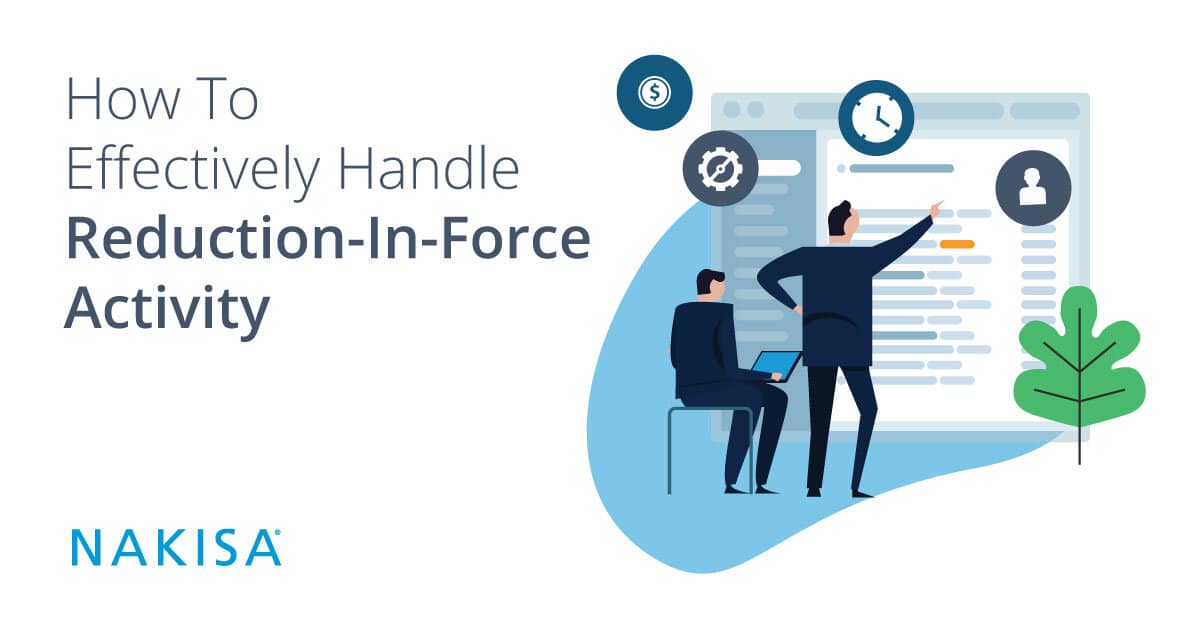Reduction in force. It’s an often necessary, but never pleasant, part of business operations.
Whether they’re because of a merger or acquisition, or shifting business strategies and priorities, major reorganizations require careful planning. Your transition plan needs a thoughtful anticipation of your employees’ emotional reactions, yet still focused on the business needs.
For HR leaders, successfully navigating the emotion and logistics of major headcount reductions or layoffs is never easy.
“Layoffs are first and foremost about your people,” HR veteran Beth Steinberg tells First Round Review, “Those who will be let go, those who remain with the company, and the leaders who guide the company through the process. So, while it’s a business decision, what’s in motion are the people you’ve hired and have helped you build.”
For employees, reorganizations are times of serious uncertainty. Of course, this is especially true for those employees who are let go. However it’s also true for those who remain which can be hard to remember. Often, the uncertainty of the situation leads to remaining employees jumping ship for fear of losing their own jobs.
What's if there's is one of the eliminated positions?
How well did they do in their last performance appraisal?
What does this say about the future of the company?
For HR managers and staff leaders, efficiently handling employee uncertainty means ensuring as organized a reduction in force as possible.
Here are some important steps, according to Terina Allen in Forbes, for handling an orderly and effective reduction in force:
- Plan ahead. Assess your teams, identify critical positions and departments, and develop criteria for making layoff decisions. Then, ensure that you have a plan for the realignment and restructuring of remaining employees.
- Be transparent. Reductions in force, especially the planning phases, obviously require a certain level of discretion before major reorganization announcements are made. But HR and business leaders need to be as open and transparent as possible. This will help to reduce unsubstantiated rumors and preserve employee trust and morale.
- Focus on ALL employees. When major reorganizations occur, HR leaders need to focus on the employees they are letting go, and those that will remain. No matter how transparent, open, and prepared you may be, your workforce will no doubt face challenges of morale. Be sure to have a strategy for maintaining trust after major reductions in force.
Despite the seeming simplicity of this three-step process, there's nothing simple about it. Properly planning, informing employees, and putting a reorganization strategy into place is traditionally extremely time-consuming and resource-heavy. The longer the process takes, the riskier it becomes.
Wherever you are in the process of reorganization, efficiency and speed are critical. Drawing out the process can lead to reduced morale and proficiency among your remaining workforce.
That’s why the main question for organizations planning a major reduction in force is, “How can we do this as efficiently as possible?”. This is where technology can help.
New organizational design tools can help human resources plan and track throughout the entire process. Allowing them to model different workforce reduction and reorganization scenarios is very powerful.
Technology can also help track workforce realignment and reduction in force goals. This ensures that your team, and senior management is making the right changes at the right time. It can also help monitor your succession planning, ensure your change strategy is implemented in a short period of time, at its most optimized.
Nakisa’s organizational design solution, for instance, gives HR and business leaders the ability to quickly understand the current organization, no matter the number of employees. The importance of planning and implementation as a single thought is paramount. Creating and sharing organizational models and scenarios to get buy in from stakeholders. Using detailed analytics to make informed and strategic decisions.
The solution also allows your team to write back the new organization structure into your existing systems to speed up your implementation and meet your effective date. All of these tools work towards 100 percent efficiency during RIF activity.
No reduction in force is ever easy. But organizations can ensure more efficient staffing changes through better planning, more open communication, and the use of key technology tools.
Learn more about how Nakisa HR Suite (formerly Hanelly) an help your team with reduction in force and reorganization efforts.





